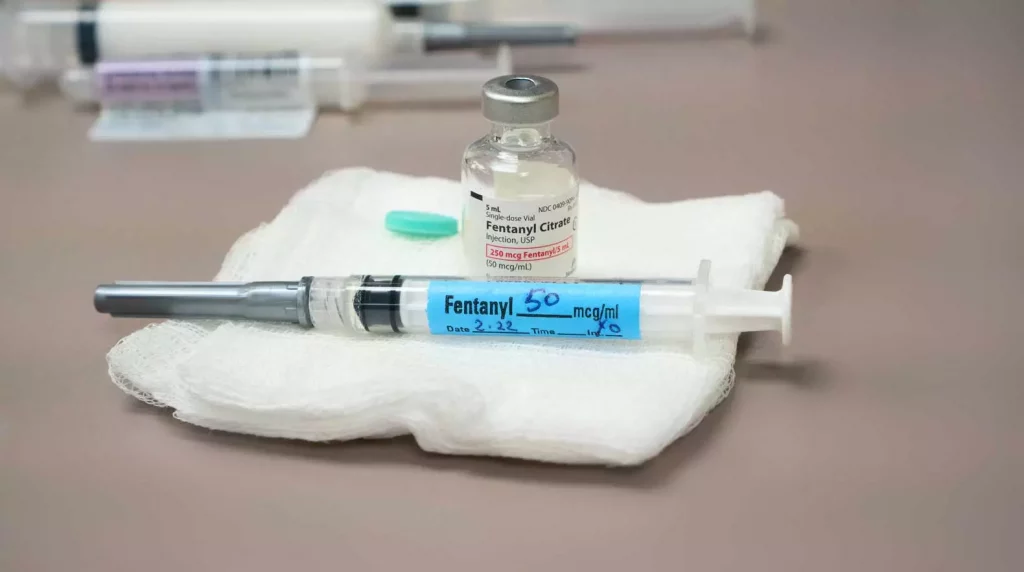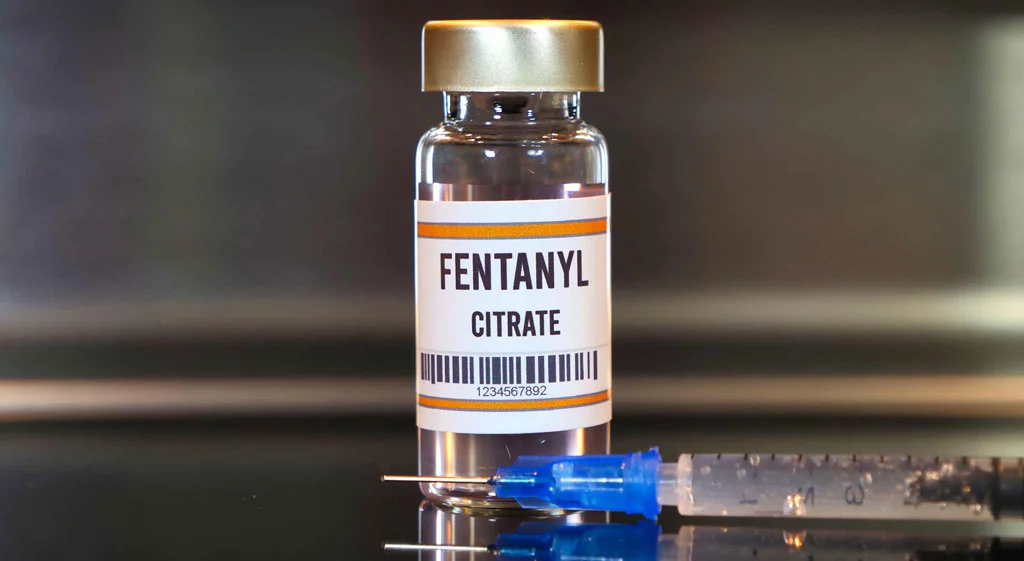Fentanyl Withdrawal Symptoms
Few drugs exist that have taken our country hostage in the way that fentanyl has. There was the cocaine explosion of the 70s, but the tragedy attached to that era was more focused on the groups that battled each other for business.
The 1980s crack cocaine epidemic did a significant amount of damage to inner-city neighborhoods. However, the number of overdose deaths wasn’t even close to those of our current epidemic.
The Unfortunate Fentanyl Overdose Reality
Last year fentanyl was responsible for nearly 100,000 deaths. To put that number in perspective, the number of people who were killed would be enough to populate a small-to-mid-size metro area like Spokane, Washington, or Richmond, Virginia.
Individuals lucky enough to escape with their lives have the painful challenges of withdrawal to deal with. However, nothing is as final or tragic as losing your own life. If recovery is to be experienced, the pains of detox must be experienced to emerge healthier on the other side of addiction.
The majority of our population doesn’t know much more about fentanyl besides that it’s making it into bags of what’s being sold as heroin, and it’s killing people. What is fentanyl, and what’s making it spread like wildfire in America?
What Is Fentanyl?
Fentanyl has become a drug of abuse in recent years because it is more potent and less expensive to produce than heroin. It also has a short duration of action, with fentanyl’s effects lasting one to two hours.
This is what makes fentanyl especially dangerous. Users do not know how much fentanyl they are taking or if the fentanyl is mixed with other drugs such as fentanyl analogs.
On its own, fentanyl is already 100 times stronger than morphine, which at one point was considered the strongest opiate available on the market. The potency of this drug isn’t the only danger it presents to users.
What does Fentanyl look like?
Fentanyl is white and is normally odorless and tasteless. This makes identifying the drug when it’s mixed with other substances especially difficult. The lack of any clear identifying characteristics has earned this drug the title of the deadliest illegal narcotic on the market.
Further creating a perfect storm is the availability and cost of fentanyl. This substance is easily purchased online and at costs that allow for distributors to make four and five times their initial investment.
It seems as if fentanyl appeared overnight, as news headlines shifted from the opioid painkiller epidemic directly to fentanyl. What triggered the spread of fentanyl in America?

The Spread of Fentanyl in America
The spread of fentanyl in America has led to this deadly drug infiltrating nearly every corner of the country. There isn’t a single culture, race, ethnicity, or class that hasn’t been affected by the destruction of this deadly synthetic opioid.
What began between 2008 and 2009 as a few isolated overdose deaths that were fentanyl-related has turned into the crisis we are currently witnessing. Authorities were able to trace the fentanyl in those overdose cases to one clandestine fentanyl lab in Mexico.
The DEA moved aggressively and took the lab down with the assumption that the fentanyl issue was also taken down. For a while, things seemed to quiet down, with hardly any fentanyl-related cases – that is, until 2012.
During the year 2012, the prescription opioid epidemic was in full swing, with Americans becoming outraged at the amounts of prescription medications available with hardly any effort. Somehow needed to be held accountable as families of those impacted demanded answers.
An Avalanche of Opioids in America
Among the news of the plethora of lawsuits and subsequent multi-million dollar settlements involving big pharma companies, something more sinister was happening under the radar. Fentanyl was slowly creeping back into the black market drug scene, and this time the perfect storm of events would allow it to explode.
Government sanctions and indictments on “pill mills” and illegal operating physicians severely affected the availability of pain medication. Additionally, individuals who still had their prescriptions struggled with inflated prices, and those who were cut off because of sanctions were left with no other choice but to hit the streets.
The Many Paths to Opioid Use Disorders
Users who once relied on their monthly supply of pain medication turned to heroin – but ended up getting much more than they bargained for. Since 2013, the number of overdose deaths has increased every single year.
The numbers aren’t in for 2022 as there’s still time left, but if the numbers for 2021 are surpassed, the loss of life would be unprecedented. Change must be implemented from the ground level, as we’ve repeatedly seen that the government’s war on drugs was a failed venture.
If you feel like someone you know is struggling with heroin or fentanyl abuse disorder, you need to educate them about the effects of fentanyl dependence.
The Effects of Fentanyl Dependence
Many severe effects of fentanyl dependence cause issues in nearly every aspect of a user’s life. Personal, professional, physical, and mental elements are all at risk of feeling the side effects of fentanyl abuse and dependence. The list below contains some of the most common themes among individuals who are physically dependent on fentanyl.
- Users can no longer function without fentanyl in their systems. It’s almost impossible to even get out of bed and function without first taking the first dose of heroin or fentanyl.
- Individuals will also experience the death of many friends. This can lead to intense feelings of guilt and depression.
- Personal relationships will be heavily affected as users withdraw from family and loved ones. The drug becomes the main dynamic, and all of their time is dedicated to obtaining enough fentanyl to stay well.
- Eventually, the user’s professional life suffers, and loss of employment is the typical end result. This leads to committing crime or selling personal items to maintain the habit.
- Additionally, the physical risks are significant in every area. Any IV user always runs the risk of HIV, Hepatitis, and other illnesses. There’s always a risk of overdose, and long-term use carries significant odds of developing a heart or vascular condition.
Being aware of the signs of fentanyl withdrawal can help to identify fentanyl dependence.
Signs of Fentanyl Withdrawal

If you know someone who you think might have issues with fentanyl, look out for the following signs of withdrawal:
- Fatigue, constant yawning, and watery eyes
- Signs of being generally uncomfortable and restless
- Signs of nausea or vomiting
- Complaints of body and muscle aches
- Difficulty sleeping
- A marked appearance of having the flu or flu-like symptoms
- Heavy sweating
- Alternating between periods of hot and cold
- Goosebumps
Once the presence of fentanyl abuse disorder is identified, educating the user on the timeline of fentanyl withdrawal can provide them with enough knowledge to look into recovery.
The Timeline of Fentanyl Withdrawal
There is a timeline of fentanyl withdrawal that’s clearly outlined by several distinct phases. Understanding the severity of these withdrawals may give an individual the push they need to enter recovery. Additionally, it can give them assistance in preparing for the process in an effort to help with the discomfort they’ll experience.
12-36 Hours
Withdrawal symptoms begin as early as 12 hours after the individual’s last use. Fentanyl has a short half-life, so it doesn’t take long for withdrawal to begin. The initial stages include fatigue, frequent yawning, watery eyes, irritability, and anxiety related to preparing for detox.
48 Hours – Day 4
This period is often the most intense during the withdrawal process. This stage includes increased heart rate and blood pressure, stomach pain, nausea, vomiting, muscle aches, hot and cold chills, inability to get comfortable, and insomnia. Insomnia is one of the most difficult symptoms, as the lack of sleep can lead to psychosis and other issues.
Day 5 – 7
The most intense physical side effects will begin to subside. However, insomnia, depression, and intense cravings will persist. It’s important to be prepared for the mental challenges associated with the detox process to avoid relapse. A plan should be crafted for entering treatment immediately after detox is finished.
It’s never recommended to go through cold-turkey detox at home. Besides the risk of relapse, there are significant health risks associated with this type of detox.
Risks of Cold Turkey Detox
Cold turkey, or at-home detox, is one of the most dangerous ways to detox from opioids. With no assistance from medical staff, individuals run the risk of developing further physical challenges. These challenges are associated with the heart and include cardiac arrest, high blood pressure, and intense anxiety.
Individuals will also have difficulty keeping food down and possibly develop diarrhea. When IV liquids can’t be accessed, there’s an increased risk for dehydration and other negative physical side effects.
Medically-assisted detox and treatment provide clients with options for medication-assisted treatment.
Medication-Assisted Treatment for Opioids

During detox, medication options are available that can provide significant relief from the most intense symptoms. The following list contains the most common options for making detox more comfortable:
- Clonidine, a blood pressure medication dc
- Benzodiazepines like Xanax for anxiety and increased heart rate
- Muscle relaxers for stiff and sore muscles
- Promethazine for nausea
- Antidepressants
Keep in mind that most individuals only receive medication temporarily to help deal with the discomfort of detox. However, in some cases, mental health professionals may recommend a regimen of certain psych medications to maintain proper mood balance and deal with emotions after treatment.
After detox, the next important decision is whether to attend inpatient or outpatient services in fentanyl recovery.
Outpatient Services in Fentanyl Recovery
Outpatient services in fentanyl recovery can provide significant benefits if the right circumstances are present. Intense outpatient services should only be considered for individuals with mild fentanyl abuse disorders.
Severe and extremely severe cases are better candidates for inpatient and partial hospitalization to help reduce the chances of relapse. It’s important to decide the best course of action with your care specialist. However, outpatient rehab provides the following benefits if you meet the criteria for participation:
- Access to the same classes and mental health services as inpatient
- Most outpatient treatment services are contained at the same location as inpatient treatment.
- Clients still receive access to peer recovery groups, as well as family therapy for substance abuse treatment in Los Angeles.
- Clients are still able to maintain a fairly normal life, including participating in their job and a typical home environment.
- There is an advantage to exposing yourself to the elements of everyday life. Sometimes after inpatient treatment, going back to normal life can be very overwhelming. Maintaining this exposure to everyday situations allows you to get real-time practice at implementing our new social and behavior skills and coping strategies.
When you’re looking for a top-notch intensive outpatient services provider, it’s important that all of the advantages mentioned above are included. There should be multiple options for approaches to recovery, as well as access to peer recovery groups as well.
Discovery Transitions Outpatient provides all of these services and more. When you’re ready to take on recovery and maintain elements of everyday life, contact one of our admissions team, and they’ll be happy to help.



 Call
Call Text
Text